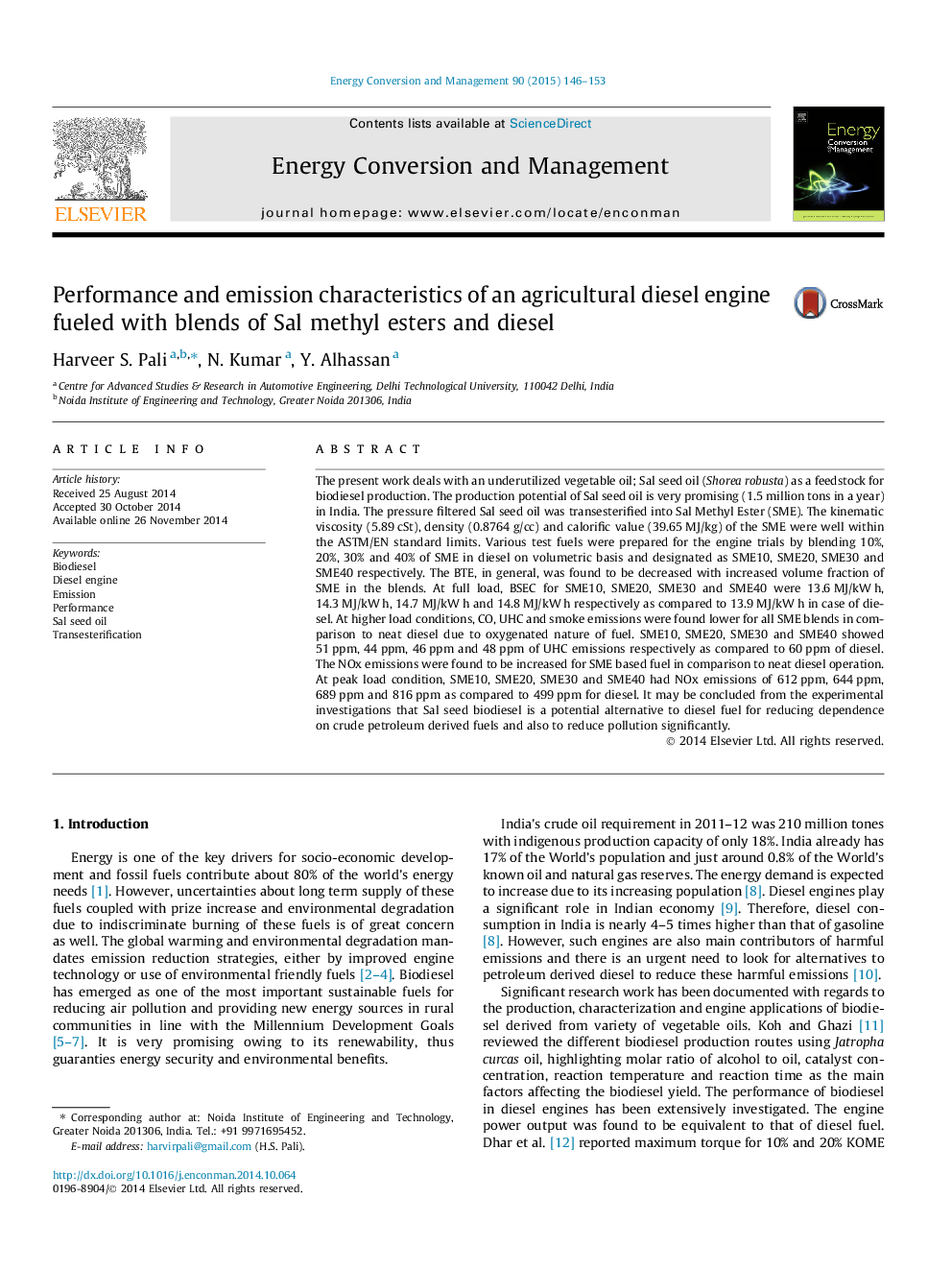| کد مقاله | کد نشریه | سال انتشار | مقاله انگلیسی | نسخه تمام متن |
|---|---|---|---|---|
| 771788 | 1462872 | 2015 | 8 صفحه PDF | دانلود رایگان |
• Sal seed oil is unexplored biodiesel feedstock which is abundantly found in India.
• Sal seed oil has good oxidation stability.
• Performance and emission characteristics of the blends of Sal methyl esters with diesel evaluated.
• At higher loads, CO, HC and smoke emissions of SME blends were lower than diesel.
The present work deals with an underutilized vegetable oil; Sal seed oil (Shorea robusta) as a feedstock for biodiesel production. The production potential of Sal seed oil is very promising (1.5 million tons in a year) in India. The pressure filtered Sal seed oil was transesterified into Sal Methyl Ester (SME). The kinematic viscosity (5.89 cSt), density (0.8764 g/cc) and calorific value (39.65 MJ/kg) of the SME were well within the ASTM/EN standard limits. Various test fuels were prepared for the engine trials by blending 10%, 20%, 30% and 40% of SME in diesel on volumetric basis and designated as SME10, SME20, SME30 and SME40 respectively. The BTE, in general, was found to be decreased with increased volume fraction of SME in the blends. At full load, BSEC for SME10, SME20, SME30 and SME40 were 13.6 MJ/kW h, 14.3 MJ/kW h, 14.7 MJ/kW h and 14.8 MJ/kW h respectively as compared to 13.9 MJ/kW h in case of diesel. At higher load conditions, CO, UHC and smoke emissions were found lower for all SME blends in comparison to neat diesel due to oxygenated nature of fuel. SME10, SME20, SME30 and SME40 showed 51 ppm, 44 ppm, 46 ppm and 48 ppm of UHC emissions respectively as compared to 60 ppm of diesel. The NOx emissions were found to be increased for SME based fuel in comparison to neat diesel operation. At peak load condition, SME10, SME20, SME30 and SME40 had NOx emissions of 612 ppm, 644 ppm, 689 ppm and 816 ppm as compared to 499 ppm for diesel. It may be concluded from the experimental investigations that Sal seed biodiesel is a potential alternative to diesel fuel for reducing dependence on crude petroleum derived fuels and also to reduce pollution significantly.
Journal: Energy Conversion and Management - Volume 90, 15 January 2015, Pages 146–153
